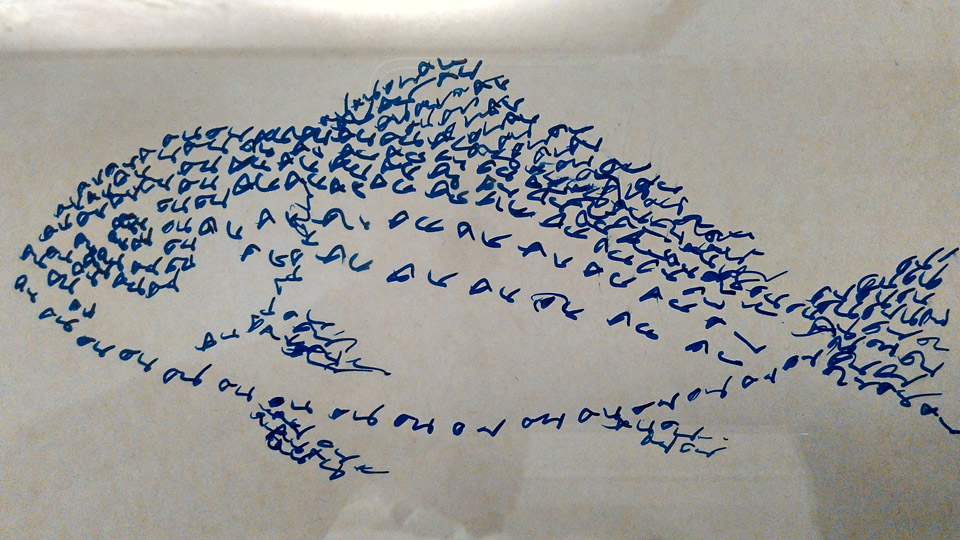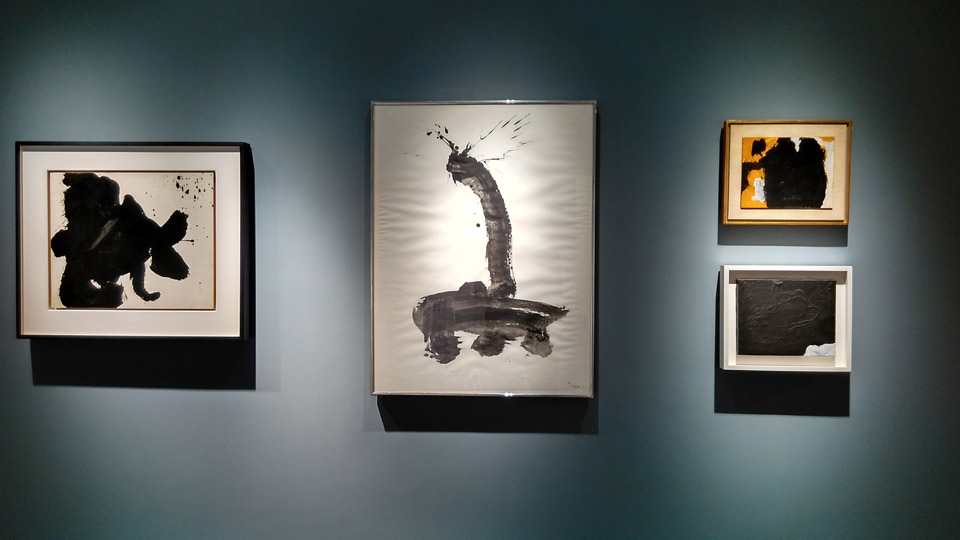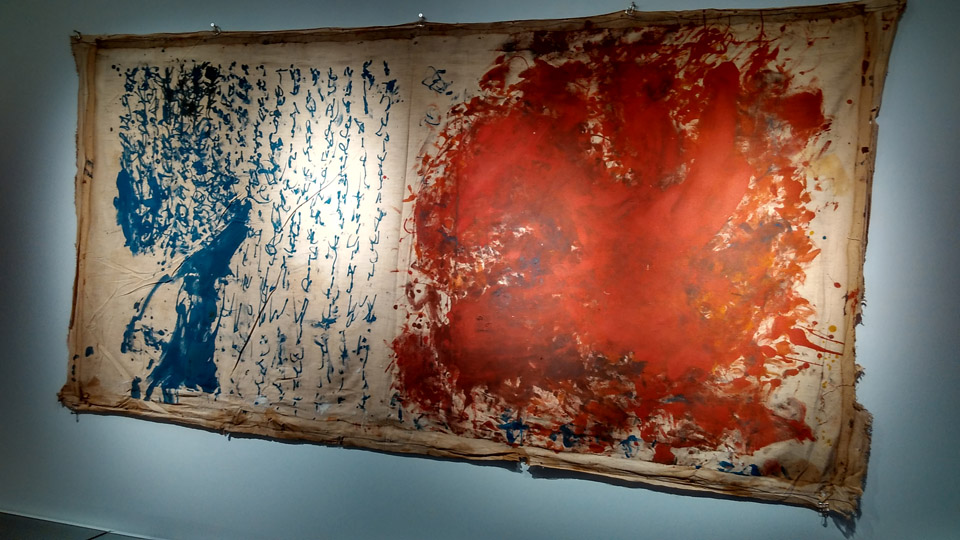Hong Kong, December 12, 2015 – March 06, 2015, http://www.para-site.org.hk
Artists: Robert Motherwell, Bruce Nauman, Tomie Ohtake, and Tang Chang, Curators: Cosmin Costinas and Inti Guerrero
My first reaction upon entering the show was: Finally a dignified display of Robert Motherwell’s works! This exclamation came mainly as a reaction to the previous ‘home’ of these works, in the Pedder Building’s Pear Lam Gallery, where they have been displayed in a neat and clean yet sadly white and context-less environment. Only a small sub-section of smaller size Motherwell’s made it to Para Site, but still, now they looked much better.
Para Site always pays great attention to detail and this time it was not different. The toned walls and well-adjusted spot lights, the neat glass-top display cases, everything looked perfect. A bit like the Ben Brown display of German Art, but with much more background and research information provided to the audience. One wall was covered with a long timeline, mentioning general historic events as well as specific events related to each of the artist’s lives – a bit too long and too detailed, but it’s better to have more than a lack information. The Para Site custom of providing a small informative exhibition booklet has also been continued, very handy and just right in terms of information content.
Regarding the works itself, the cross-continental combination felt at first strange: Motherwell from the U.S., Tang Chang from Thailand/China and Tomie Ohtake from Brazil/Japan. How can artists working is so different contexts be even compared to each other? But as soon as I asked this question, I realized that it was precisely this stereotype that the exhibition was trying to break with. Even the unrelated, even the artists which did not know about each other’s existence can be juxtaposed and it can be meaningful. Bruce Naumann’s video was thrown in as yet another strange and unexpected juxtaposition, and here it started to feel a bit like Para Site mannerism, however I also do agree that it added a certain lightness to the otherwise too painting-heavy exhibit.
Approached as a set of three mini-solo exhibitions, one could peek into the artists individual practices. Seen as a whole, the individual artist exhibits became more like examples in a case study of the global movement and transformation of modernist thought, echoing the popular discussion within Asia of multiple localized modernisms.



